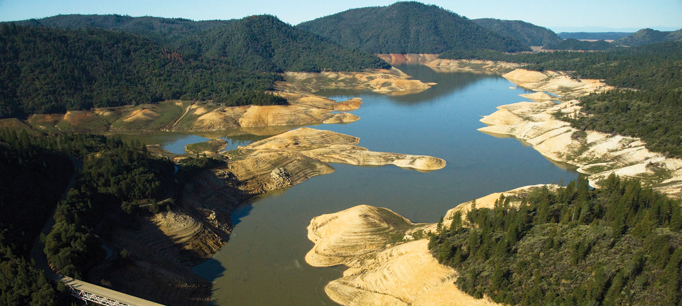This is part of a continuing series on the impact of the drought.
In most years, the arrival of May signals the end of the rainy season. As California transitions from hoping for rain to managing its absence, it is appropriate to assess how we have handled this drought so far. In a recent blog post, we, along with our colleagues at UC Davis, UC Hastings, and Stanford University, identified several key lessons from the current drought. One of these is the need to modernize the way we track water supply and use.
To illustrate, just this past week the State Water Resources Control Board released a series of graphs that summarize the gaps between projected supply and demand for this year. These graphs form the basis for determining who may be told to curtail the amount of water they take out of rivers when supplies are scarce. The take-away from these projections is that significant shortfalls will occur starting this month—when the irrigation season starts in earnest. Under California’s water rights system, irrigators holding junior water rights—i.e., rights established more recently—could be completely cut off in most areas. It also appears that unprecedented cuts will occur for senior water rights holders as well.
Although these demand and supply curves appear precise, the state board is handicapped by a lack of good information on water supply and use. To manage the drought more effectively, the board needs better information in two key areas.
First, there have been major advances in technology that can be used to measure flow. These include sophisticated remote sensing techniques, computer modeling, and sensor networks. Although there has been progress, the state has been slow to adopt these new technologies. For many rivers the board, and its partner the California Department of Water Resources, are, at best, making educated guesses. In addition, the state uses protocols for managing this information that were adopted in the early 20th century. In a drought there is need for real-time information and forecast-based projections to manage diminishing supplies.
Second, who uses how much water, and when, is acutely important when river flows are low, because a handful of users can have great impact. Although reporting on water use has improved since legislation passed in 2009, the board has not been in a position to verify the accuracy of self-reporting by thousands of water rights holders, including the oldest, most senior water right holders. Statewide, there is no comprehensive understanding of how and when water rights holders make use of alternative supplies, including the state’s overdrafted groundwater basins.
Since the economic, social and environmental consequences of water management during a drought are especially high, people understandably want to see the board administering diversion curtailments with precision and in real time. But during the wet periods, the legislature and state agencies tend to ignore this issue because there is more water to go around and little public pressure to correct information gaps. Then, when the wet inevitably turns to dry, there are insufficient time and resources to address the problem.
Droughts provide the political and economic motivation to get our water management system into better shape. Step one would be to invest in modernizing the way we measure, forecast, and administer water use—hopefully before the next drought.



